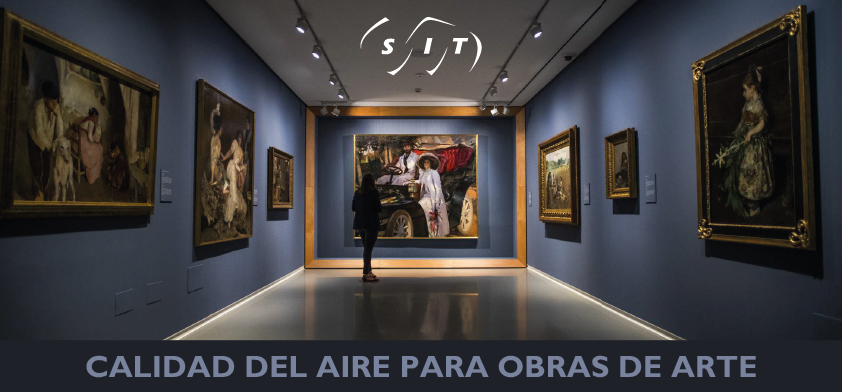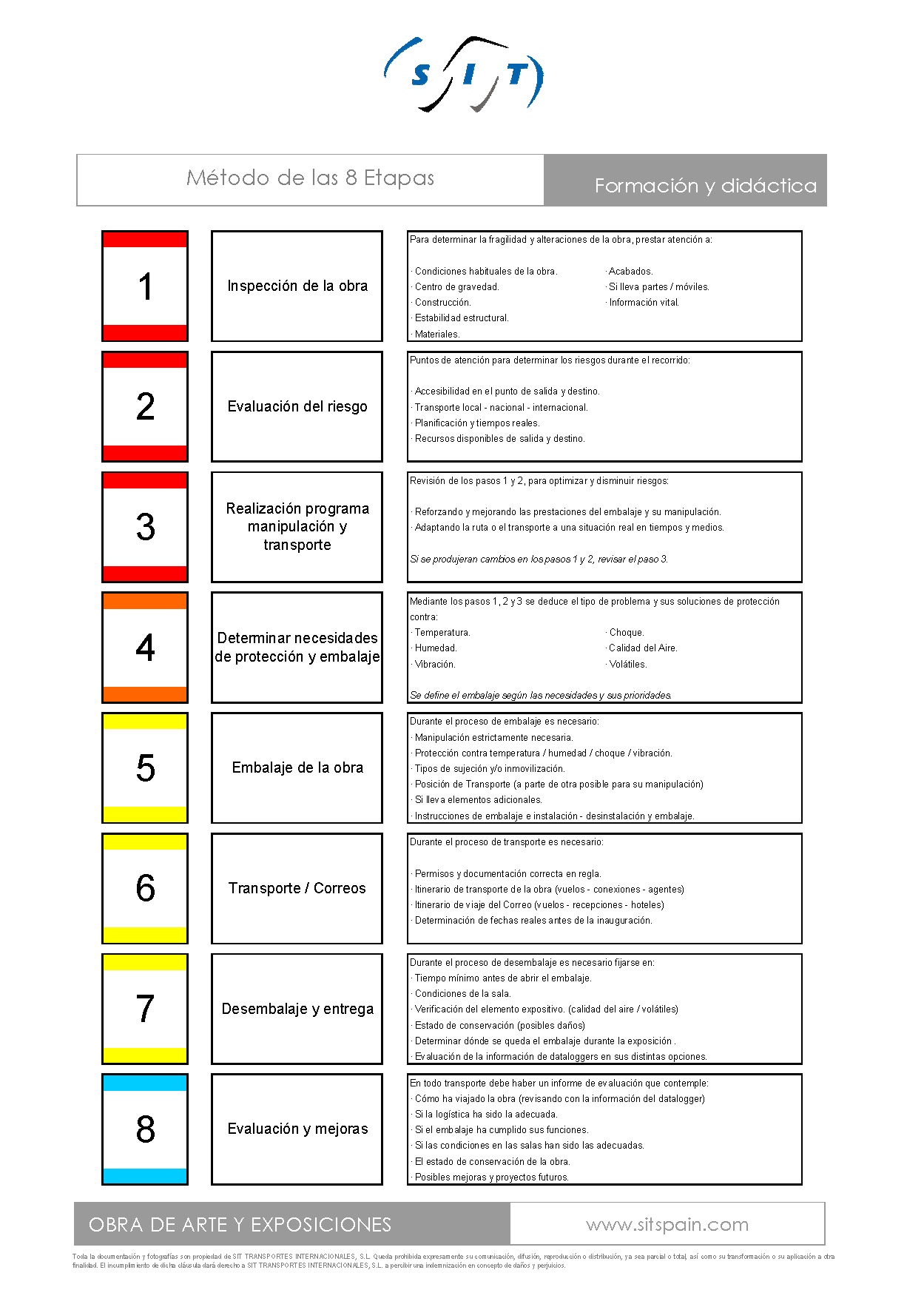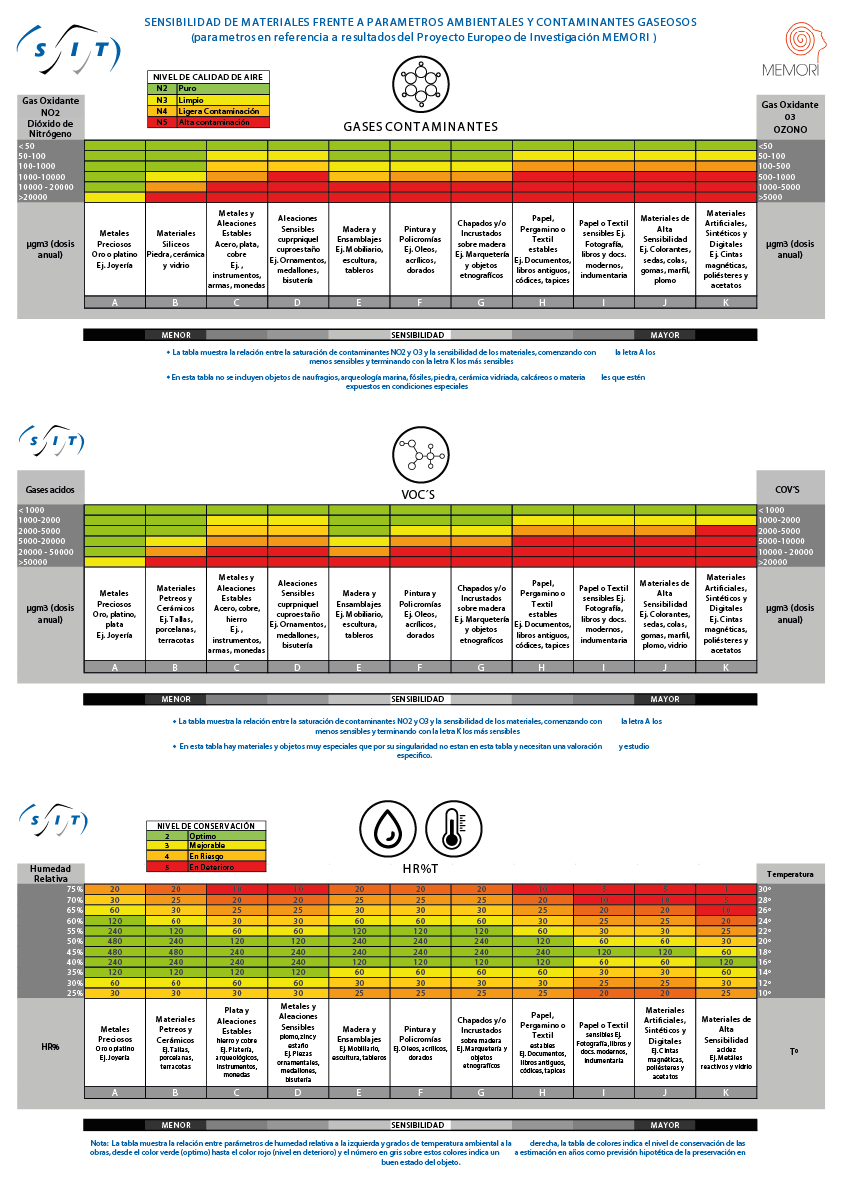
Predictive conservation designates maintenance and information plans as a learning method; through the evaluation of different types of data, the current state of conservation of works of art is determined.
Accurate predictions are made about future developments by detecting and assessing possible alterations or problems that may arise.
In short, it is a foresighted conservation that determines the optimum conservation of the cultural funds of institutions, museums, galleries and private collections.
As a method of action, SIT has been using for many years a predictive system called the 8-stage method, which covers the entire process from the origin to the destination of a work of art.

And, complementing this method, we have made a graph of the sensitivity of materials to different environmental and pollutant methods.

Conclusion:
The advantages of predictive maintenance are the increase of the life of the art object, thanks to the previous information of accumulated data and the detection of problems, we can facilitate and optimise the conservation of the works of art.
The more information we can gather on different parameters with different meters and sensors, the better we will know the artworks and the better we will be able to conserve them.